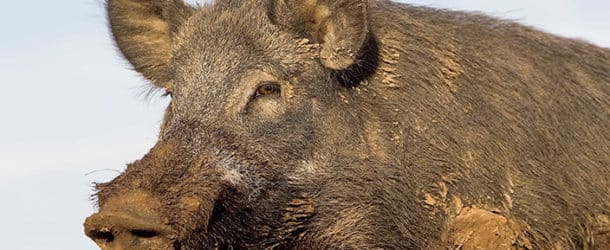BY LARRY J. LEBLANC
As I sat down today to whip out some words of wisdom about the outdoors, I searched in one of my reference files, which contains all sort of information that I have gathered over the years. My reference files are full of stories and notes that I have gathered in my life, and I was looking for something to give me a jumpstart.
As I cruised through the electronic script on feral hogs, I unexpectedly came upon one saying that was out of step with the subject of feral animals. It was apparently misfiled, but it struck me as funny, and maybe it does fit with feral animals. It was written by P. J. O’Rourke and is as follows: “Giving money and power to government is like giving whiskey and car keys to teenage boys,” and with the goings on in Washington, D.C., it struck me as apropos.
Anyway, as I slipped off into government from feral hogs, one can see how there could possibly be a connection of some kind.
I bring up feral hogs because they are unpredictable, if you come face to face with them in the wild. A drove, or herd, may turn and run at the first smell or sight of man, or they may just decide to run over to you and see what you taste like.
Let me give you a little background about these animals, and don’t ever forget the old saying about the guy who went to the outhouse and the hogs got him — and that referred to domestic hogs.
Feral hogs are the descendants of European wild hogs imported for sporting purposes a couple hundred years ago, and from escaped domestic swine that have established feral populations.
European wild hogs have several distinguishing characteristics that set them apart from domestic hogs. Among these are their brown to blackish-brown color, with grizzled guard hairs; a mane of hair that sticks up sort of like a wire brush running from the neck to the rump; a straight and heavily tufted tail; and ears covered with hair.
Characteristics of feral hogs are varied, depending upon the breed of the ancestral stock. European wild hogs and feral hogs interbreed readily, with traits of European wild hogs apparently being dominant, because many feral hogs look very similar to the wild boars of Europe.
Feral hogs have really become a nuisance, and range just about anywhere you want to look for them, from the southern east coast on west through Texas.
Good feral hog habitat is a timbered area. Hogs are also fond of marsh and grass-sedge flats in coastal areas, particularly if wild grapes are common. When it comes to diet, feral hogs aren’t too picky, although the biologists claim they have favorites. I haven’t seen much that feral hogs won’t eat, and animal matter on the menu of feral hogs includes earthworms, marsh fly larvae, leopard frogs, snakes and rodents. The snakes they eat include cottonmouth water moccasins and rattlesnakes, and the venom doesn’t seem to bother them.
Feral hogs have negative influences on wildlife and plants, as well as domestic crops and livestock. Extensive destruction is a common result of their rooting habits. They can tear up a nice yard or hay field rapidly. Ask any hunter who sets out a feeder that throws corn to attract deer about how the hogs will run the deer off and eat all of the corn, and will also tip over the feeder if it is not securely anchored.
Clayton Wolf, who was, at the time, the big game director for the Texas Parks and Wildlife Department, told me the story of a man that had just purchased some land, and wanted to put a few feral hogs on it to hunt. Clayton told the man that you either have hogs or you don’t. If you have any hogs, you have too many, as feral hogs breed year-round. Litters range from one to seven, averaging two per sow, and an average of one to three suckling hogs usually accompanies brood sows.
Now let me tell you a couple things you don’t want to do concerning feral hogs. One is you don’t want to get between a sow and her piglets, because she will sense you are danger to them, and you will have two choices: shoot her or climb a tree, because a mad sow is a very dangerous animal.
The other problem that can come from an encounter with feral hogs is if a boar decides he doesn’t like you, or like where you happen to be standing. There can be no understanding why, but if they take it in their heads that they want a piece of you, you are faced with the same two choices — shoot it or climb a tree.
If you ever run upon feral hogs, and they either disappear from view or you have to shoot one, don’t forget about the rest of the herd; watch your back, because the others may decide to attack rather than run; you just never can tell which they will do.















Comments are closed.